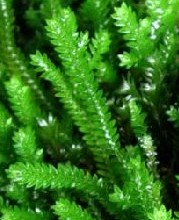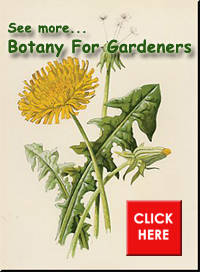 Like other members of the Pteriodophytes division, spike mosses have vascular tissue to conduct water and nutrients and reproduce by means of spores rather than seeds. They are dwarf annuals or perennials living primarily in tropical and subtropoical regions, and resemble mosses as the common name suggests. The stems are branched and creeping with ascending or prostrate branches that bear four rows of small, tightly packed leaves, each with one vein and a small scale-like structure (ligule) at the base of the upper surface. Male and female spores are produced in sporangia located in the axils of the leaves. The sporangia bearing male spores are higher on the stems then the sporangia bearing female spores.
Like other members of the Pteriodophytes division, spike mosses have vascular tissue to conduct water and nutrients and reproduce by means of spores rather than seeds. They are dwarf annuals or perennials living primarily in tropical and subtropoical regions, and resemble mosses as the common name suggests. The stems are branched and creeping with ascending or prostrate branches that bear four rows of small, tightly packed leaves, each with one vein and a small scale-like structure (ligule) at the base of the upper surface. Male and female spores are produced in sporangia located in the axils of the leaves. The sporangia bearing male spores are higher on the stems then the sporangia bearing female spores.
There is one genus and 700 species. The Selaginellaceae have little economic value but some species may be of interest to gardeners. Mat-forming Selaginella kraussiana ‘Aurea’, for example, is a good ground cover in shady places with its feathery chartreuse foliage. Selaginella lepidophylla is known as the resurrection plant because in  times of drought the plants leaves roll up into a ball until exposed to moist conditions when it unrolls and continues to grow. There are other plants known as resurrection plant, however, that are totally unrelated to S. lepidophylla.
times of drought the plants leaves roll up into a ball until exposed to moist conditions when it unrolls and continues to grow. There are other plants known as resurrection plant, however, that are totally unrelated to S. lepidophylla.
The distinguishing characteristics of the Spike Moss Family are:
-
1. Leaves arranged on stems in four rows.
2. Male and female spores are produced.